Microdiscectomy
Back pain caused by a herniated disc can be unbearable and significantly reduce the quality of life. But there is a way out – a microdiscectomy. This is a low-traumatic microsurgical operation that is performed when conservative treatment is ineffective and helps in the fight against radicular syndrome.
What is a microdiscectomy
Microdiscectomy is a surgical procedure used to remove a herniated disc. This is a disease in which a disc fragment protrudes into the spinal canal and presses on the nerve structures passing through it. Patients experience severe pain, numbness, or weakness in the area that this nerve controls. Collectively, these symptoms are called radicular syndrome.
During the procedure, the surgeon makes a small incision in the hernia area and uses special microsurgical instruments to remove it, freeing the nerve root. As a result, the pressure on the nerve disappears, pain and radicular syndrome disappear.
Advantages and disadvantages of the procedure
Microdiscectomy is considered the gold standard in modern treatment of hernias of the cervical, thoracic and lumbar spine. This operation has many advantages:
-
Rapid pain relief. Most patients note a significant improvement in their condition and get rid of radicular syndrome within a few hours after hernia removal.
-
A short stay in the hospital. Usually, the patient is allowed to get up the very next day after surgery. You can leave the clinic in two or three days.
-
Minimally invasive procedure. A small incision reduces the risk of infection and speeds up the healing process. There are no unaesthetic scars and scars on the skin.
However, like any surgical operation, microdiscectomy has its own risks:
-
The risk of relapse. In some cases, a hernia between the vertebrae may form again.
-
Potential problems with the spine. A violation of the structure of the spine can cause discomfort or pain in the future.
-
The risk of postoperative complications. As with any surgical procedure, there is a risk of infection, bleeding, or nerve damage.
Microdiscectomy is an effective way to combat back pain and radicular syndrome caused by a herniated disc. However, it has its own risks that need to be discussed with your doctor before making a decision.
Indications
Neurosurgery is performed in the presence of a certain set of symptoms caused by a herniated disc in the cervical, thoracic or lumbar spine. But by itself, the diagnosis of a hernia is not an indication for surgery. At first, doctors use conservative methods of treatment: correction of motor activity, drug therapy, drug blockades and other methods. The operation is prescribed only if there are serious indications.
The indications for microsurgical hernia removal are as follows:
-
the pain is not relieved by medications;
-
there is a syndrome of damage to the horse's tail, which may result in a violation of the functions of the pelvic organs.;
-
radiculopathy (radicular syndrome) develops, and the patient experiences weakness, numbness, and pain in one or both legs.
All these symptoms are characteristic of compression of nerve roots. In the presence of such indications, surgical treatment is carried out as planned or, in some cases, immediately.
Contraindications
Although microdiscectomy is considered the gold standard for the treatment of hernias and radicular syndrome, it is not suitable for all patients. There are a number of contraindications for which the procedure may be unsafe or ineffective:
-
systemic diseases in the decompensation stage, in which surgical intervention carries serious risks (cardiovascular diseases, diabetes or hypertension);
-
blood clotting disorders;
-
oncological diseases;
-
inflammatory and infectious diseases.
Before deciding on an operation, the patient must undergo an examination to identify possible contraindications, as well as discuss all available treatment options with a doctor.
Preparation
The patient needs to undergo a series of examinations and undergo tests. This will help doctors determine the general state of health and identify contraindications. Preoperative studies include:
-
general blood test;
-
biochemical blood analysis;
-
coagulogram (blood clotting test;
-
general urinalysis;
-
ECG;
-
chest X-ray/CT scan;
-
MRI, CT scan of the spine.
Magnetic resonance imaging is the main method of diagnosing hernias between the vertebrae, so performing this study before surgery is mandatory. If the patient has contraindications (for example, the presence of a pacemaker or metal foreign bodies), CT scans are performed instead of MRI, including with contrast media. In some cases, an additional X-ray is performed with functional tests.
Next, you need to consult an anesthesiologist, a neurosurgeon, and a therapist. According to the research results, a visit to specialized specialists, such as a cardiologist, may also be required.
How microdiscectomy is performed
The operation is performed in a hospital under general anesthesia. During this procedure, the surgeon removes a part of the intervertebral disc that causes pain and compresses nerve structures.
The patient is placed on the operating table, usually on his stomach. The area where the surgical procedure will be performed is treated with antiseptic and covered with sterile towels.
The surgeon makes a small (2-3 cm) incision in the skin and muscles of the back in the area of the affected disc. Then, with the help of special tools, access is created to the desired part of the spine, minimally injuring the surrounding tissues.
The surgeon reaches the spinal column and removes the part of the intervertebral disc that causes compression of the nerve root. The operating rooms at the EMC clinic are equipped with an X-ray transparent operating table, a high-resolution microscope, and microsurgical instruments. X-rays can be performed right during surgery, which allows for maximum treatment effectiveness.
After removing the affected part of the disc and releasing the nerve root, the doctor closes the incision. The wound is treated, a bandage is applied, and the patient is transferred to the department to recover from anesthesia.
Rehabilitation
Immediately after the operation, the patient is transferred to the ward, where he regains consciousness. The next day after waking up, you can get up and walk, and it is usually allowed to leave the hospital after 2-3 days. During the rehabilitation period, some patients need to wear a corset for the lumbar spine (or a neck brace if the hernia was located in the cervical spine). Physical activity is prohibited until full recovery.
Recommendations in the postoperative period are as follows:
-
At first, you can not give a full load while sitting (from a day to a month, depending on the doctor's recommendations). After that, the duration of the sitting position can be increased.
-
It is forbidden to lift objects weighing more than 2-3 kg.
-
Some patients are shown breathing exercises and physical therapy starting from the day after the intervention. Massage or physical therapy may also be prescribed.
Although the operation is not traumatic, the removal of herniated discs is considered a serious intervention, after which it takes time to recover. For some time, the patient is not recommended to work (2-4 weeks), burden himself, drive a car. Special programs will help you recover as quickly as possible. We recommend that patients take classes under the guidance of specialists at our EMC Medical Rehabilitation Center.
Full recovery can take up to several months, depending on the individual characteristics of the body and the complexity of the operation. During this period, it is important to work closely with the doctor and follow all his recommendations.
Possible complications
Like any surgical procedure, microdiscectomy can cause certain complications. They include:
-
Infections. This is a rare but possible complication. If the area around the wound becomes red, painful, or begins to fester, you should immediately consult a doctor.
-
Bleeding. It may occur during or after surgery. It is also a rare complication that requires immediate medical intervention.
-
Damage to nerve roots. This can lead to loss of skin sensitivity in some areas.
-
Violations of the functioning of the pelvic organs if the operation was performed on the lumbar region.
-
Chronic pain for a long time after surgery.
-
Recurrent hernia. In some cases, it forms between the vertebrae repeatedly, which in some cases may require another surgical intervention.
Due to the use of modern microsurgical technologies, the operation is usually successful. Patients stop suffering from pain during the first day of the day after surgical treatment, the radicular syndrome disappears, and the number of complications is minimal.
Advantages of treatment at the EMC clinic
At the EMC Neurology and Neurosurgery Clinic, we offer high-quality treatment based on innovative technologies with proven effectiveness. Our specialists perform the full range of surgical procedures on the spine. At the same time, preference is given to modern minimally invasive methods such as microdiscectomy.
One of the advantages of this approach is that it allows you to save the patient's own disk without changing the biomechanics of the spine. This not only improves the results of treatment and reduces the number of complications, but also helps to prevent the recurrence of the disease.
Our team consists of neurosurgeon professors with significant work experience and international practice. We are confident in the quality of our services and strive to provide each patient with an individual approach and the best possible treatment.
You should not postpone your health for later. Back pain is a reason to make an appointment, get checked out, and start treatment as soon as possible.
Question-answer
How do I go to the bathroom after removing an intervertebral hernia?
You can go to the toilet immediately after surgery, but you should avoid bending over and making sudden movements. In some cases, you may need help.
When can I wash after removing a hernia between the vertebrae?
You can wash after 2-3 days, but it is important to protect the wound from direct contact with water.
Is it possible to lie on your back after spinal surgery?
You can lie on your back, but it is important to maintain the correct body position and avoid staying in one position for a long time.
When can I bend over after a microdiscectomy?
Bending is allowed after 1-2 months, very carefully and gradually.
Doctors

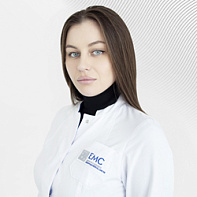
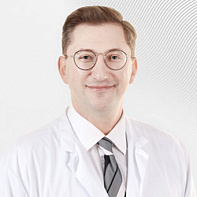
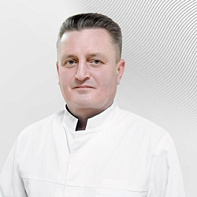
.jpg)
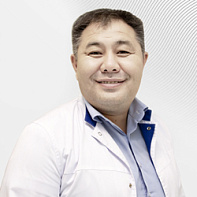
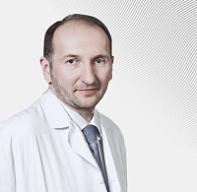
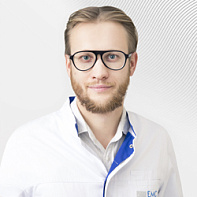
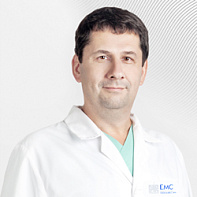
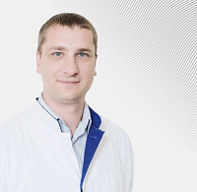
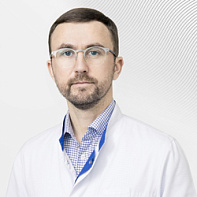
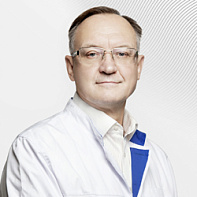
- In 1987, Professor Derlon began his collaboration with Russian neurosurgeons, regularly coming to Moscow for consultations and surgical operations.
- Competencies — glial brain tumors, cerebral ischemia, spinal pathologies
- Graduated from the Medical Faculty of the University of Paris with a degree in Neurosurgery
- Graduated from the Medical Faculty of the...




